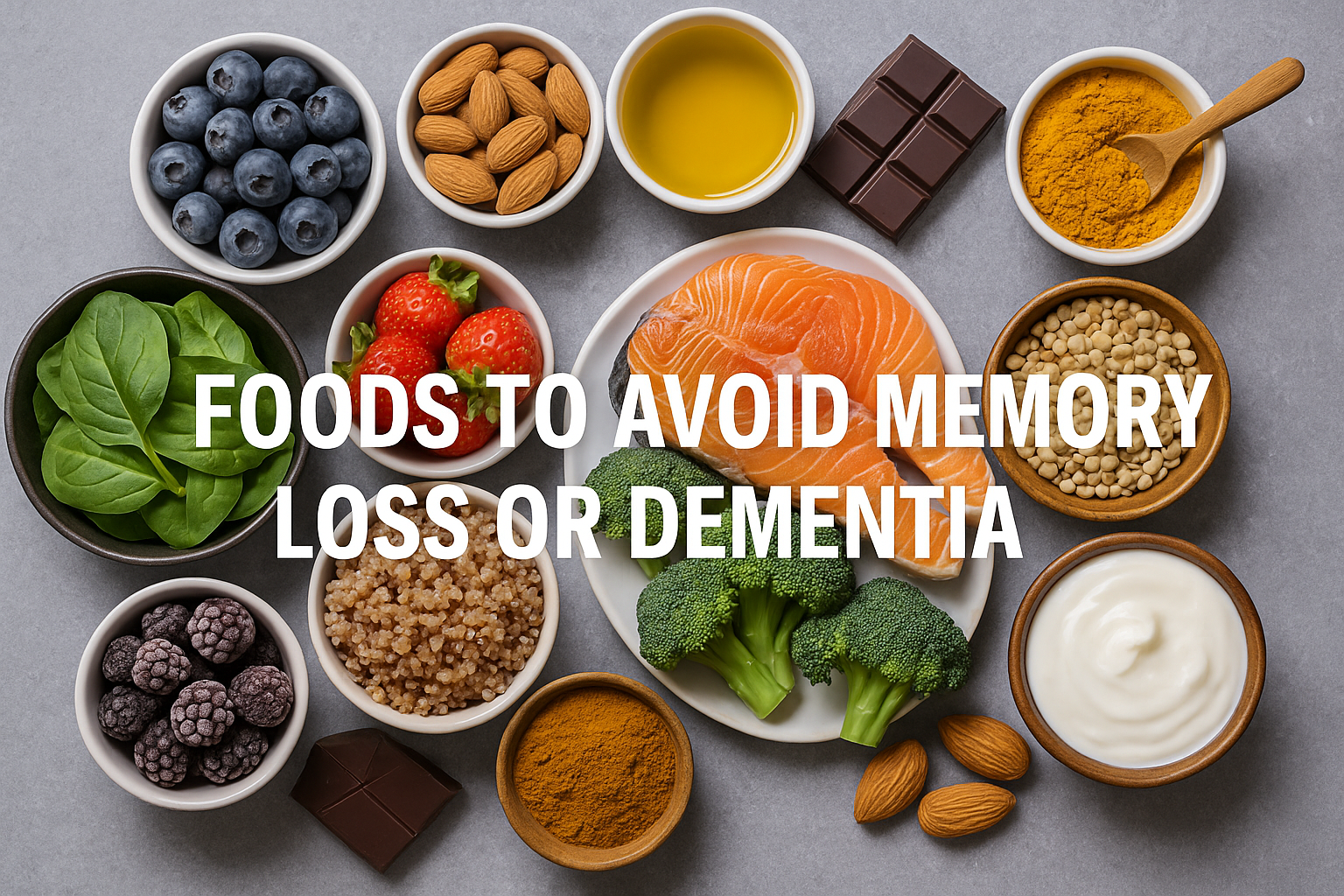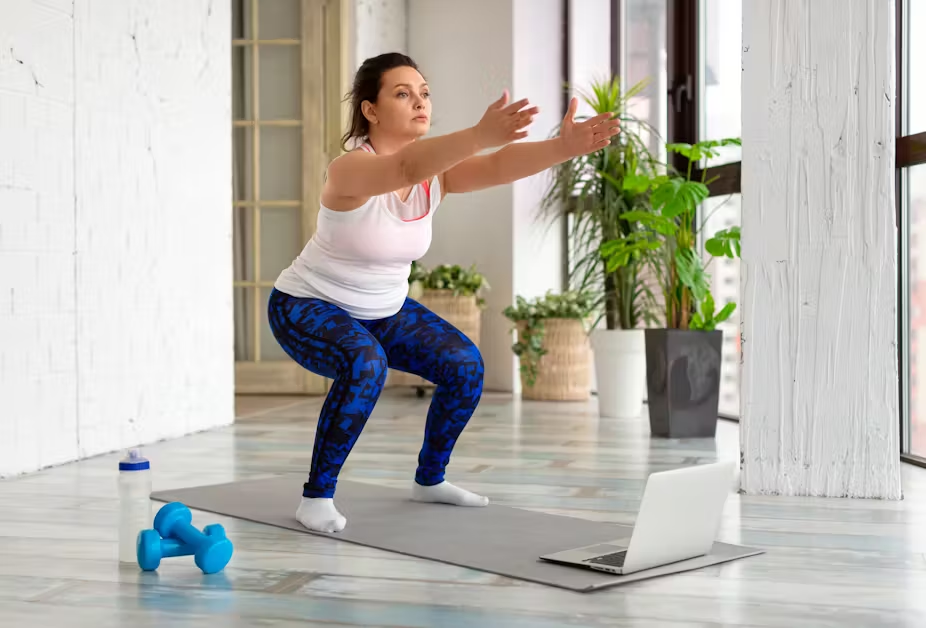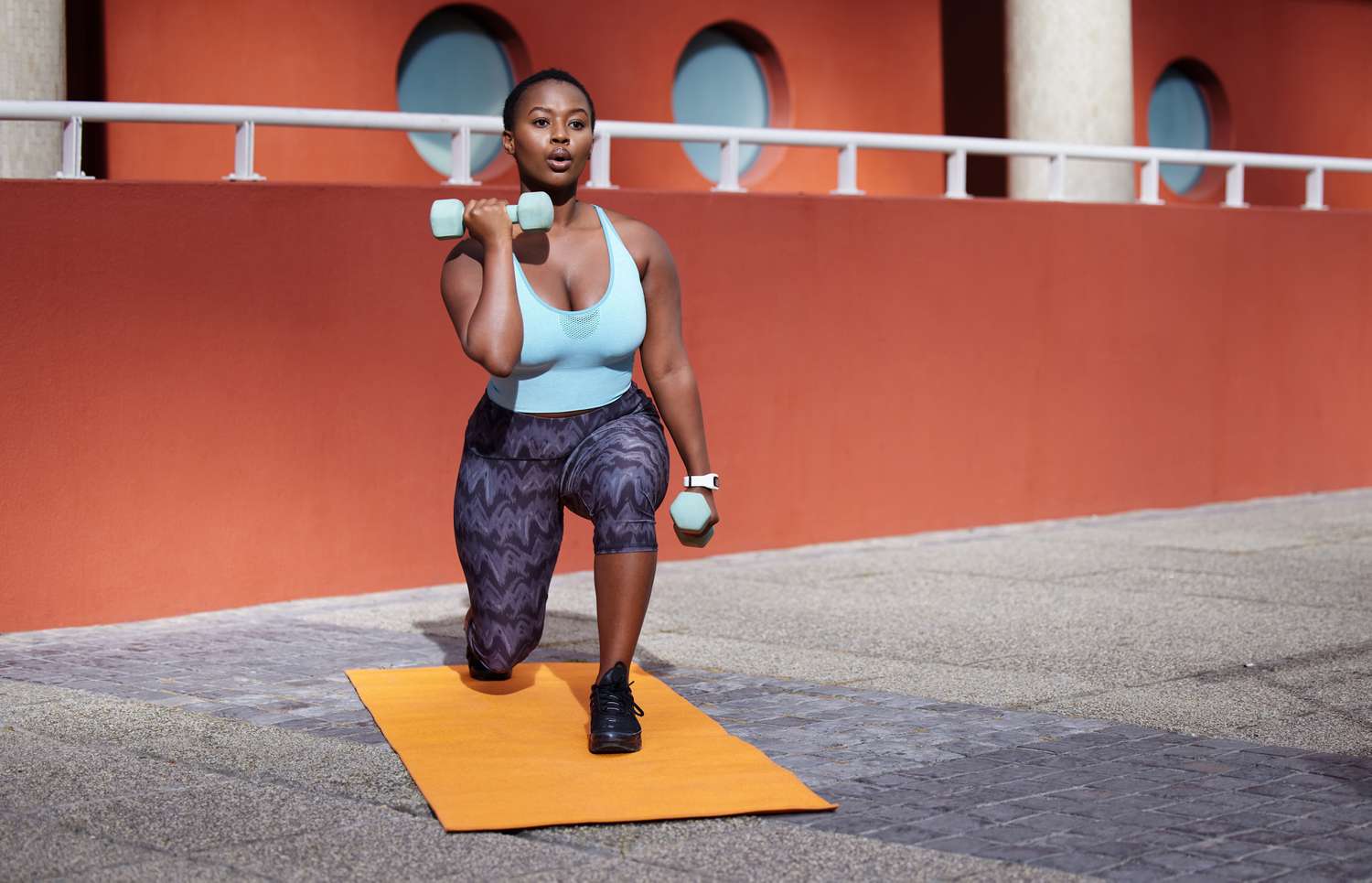Why food matters
Worldwide, Alzheimer’s disease and related dementias (ADRD) already affect > 55 million people, and the World Health Organization projects cases to double every 20 years. While age and genetics (e.g., the APOE‑ε4 allele) are major drivers, roughly 40–45 % of dementia risk is considered modifiable through lifestyle—diet chief among them. SELF
Large epidemiologic cohorts repeatedly show that people whose plates resemble the Mediterranean or MIND (Mediterranean‑DASH Intervention for Neurodegenerative Delay) patterns experience 20–35 % slower cognitive decline and markedly fewer AD plaques at autopsy. Even the much‑publicized randomized MIND‑Diet Trial, which narrowly missed its cognitive primary outcome, reported clinically meaningful benefits in several memory domains and overall cardiometabolic health. JAMA NetworkNational Institute on Aging
Below, we unpack the most brain‑supportive foods, why they work, how much to aim for, and easy ways to work them into an everyday menu.
1. Leafy green vegetables
Why they help Spinach, kale, arugula, collards, and even herbs like parsley are rich in folate, lutein, carotenoids, vitamin K, and polyphenols that dampen neuro‑inflammation and slow β‑amyloid deposition.
Evidence snapshot In a Neurology‑based autopsy study, each additional daily serving of leafy greens translated to brains that looked up to 19 years younger under the microscope. Harvard analyses likewise associate two servings a day with less amyloid on PET scans. National Institute on AgingHarvard Health
How much? 1½–2 cups cooked (or 3–4 cups raw) most days.
2. Colorful berries
Why they help Anthocyanins cross the blood‑brain barrier, boosting neuronal signaling and scavenging free radicals.
Evidence snapshot A University of Cincinnati placebo‑controlled trial found that 13 g of freeze‑dried strawberry powder (≈1 cup fresh) for 12 weeks improved word list recall in middle‑aged adults with early memory complaints. Fisher Alzheimer’s ResearchUniversity of Cincinnati
How much? 1 cup fresh (or ½ cup frozen) at least three times a week.
3. Extra‑virgin olive oil (EVOO)
Why it helps Monounsaturated fats and phenolic compounds such as oleocanthal enhance cerebral blood flow, reduce oxidative damage, and may aid tau clearance.
Evidence snapshot In pooled U.S. cohorts (> 92,000 adults, 28 years of follow‑up), intake of ≥ 7 g EVOO per day cut dementia‑related death by 28 %. A separate JAMA‑Network‑Open analysis confirmed similar protection independent of overall diet quality. JAMA NetworkNational Institute on Aging
How much? 1–2 tablespoons daily—preferably raw or added after cooking.
4. Fatty fish and marine omega‑3s
Why they help DHA and EPA are integral to neuronal membranes and temper microglial activation.
Evidence snapshot Meta‑analyses of 25 RCTs show that supplemental or dietary omega‑3 PUFAs produce small‑to‑moderate improvements in global cognition, especially when baseline seafood intake is low. Observational dose‑response curves suggest every 100 g weekly fish yields an additional 5–7 % risk reduction. PubMed CentralPubMed Central
How much? Two 100‑g servings of salmon, sardines, mackerel, herring, or trout per week (or 1,000 mg combined DHA + EPA daily via algae/fish oil if you don’t eat seafood).
5. Nuts and seeds
Why they help They deliver vitamin E (a potent lipophilic antioxidant), magnesium, and plant omega‑3 (ALA). In the MIND diet scoring, five servings a week of mixed nuts predicted the greatest cognitive benefit. National Institute on Aging
How much? A small handful (28 g) five times per week; mix walnuts, almonds, pecans, pumpkin and sunflower seeds.
6. Whole grains and legumes
Stable blood‑sugar curves protect hippocampal neurons from glycotoxicity. Aim for intact grains (steel‑cut oats, quinoa, brown rice) and fiber‑rich beans or lentils at most meals. These foods supply B‑vitamins (B1, B6, and folate) critical for neurotransmitter synthesis; the MIND score allots three servings of whole grains and four weekly servings of beans. National Institute on Aging
7. Herbs & spices—especially turmeric
Why they help Curcumin modulates NF‑κB signaling, enhances synaptic plasticity, and chelates metals.
Evidence snapshot A 2025 systematic review covering 14 trials (n = 1,221) found curcumin supplementation (90–180 mg bioavailable forms twice daily) improved global cognition with an effect size of 0.82—bigger than any approved dementia drug. PubMed CentralFrontiers
How much? Use liberal turmeric (plus black pepper for absorption) in stews, curries, or a 1‑tsp “golden latte” daily.
8. Fermented foods & the gut–brain axis
Yogurt, kefir, kimchi, and miso contribute probiotics that generate short‑chain fatty acids, dampening systemic inflammation and possibly lowering neuroinflammatory priming. Human cohort evidence is emerging, so incorporate at least one fermented serving per day.
9. Coffee and tea—dose matters
Why they help (in moderation) Caffeine promotes cerebral perfusion; polyphenols such as chlorogenic acid (coffee) and EGCG (green tea) exert antioxidant effects.
Evidence snapshot A 2024 Dutch case‑control study linked 1–2 cups/day of coffee to a ~ 55 % lower dementia risk, whereas > 4 cups/day nudged risk upward in meta‑analysis. Similar U‑curves are seen with tea. ScienceDirectPubMed Central
How much? Cap total caffeine at ≈ 300 mg (≈ 3 small cups coffee or 4–5 cups tea) spread across the morning/early afternoon.
10. Dark chocolate & cocoa
Flavanol‑rich cocoa (≥ 70 % cacao) has been shown to acutely improve working memory and long‑term potentiation. An ounce a few times a week satisfies polyphenol targets without excess sugar.
Foods and habits to cut back
- Ultra‑processed snacks & sugary drinks: spike insulin, spur inflammation.
- Excess red and processed meats: associated with higher dementia mortality in UK Biobank analyses.
- Trans‑fats and industrial seed‑oil fry‑ups: raise oxidized LDL and foster β‑amyloid formation.
- High‑sodium convenience foods: hypertension is a leading mid‑life dementia risk.
- Heavy alcohol (> 14 drinks/week) and smoking: clear dose‑dependent cognitive harm. SELF
A sample “Brain‑Protective” day
| Meal | What it looks like | Brain‑boost rationale |
|---|---|---|
| Breakfast | Overnight oats with walnuts, blueberries, spinach‑banana smoothie | Whole‑grain + nuts + berries + leafy greens |
| Lunch | Quinoa‑lentil tabbouleh, chickpea‑spinach wrap drizzled with EVOO | Legume protein, extra folate, EVOO polyphenols |
| Snack | Plain kefir with cocoa nibs | Probiotic + flavanols |
| Dinner | Grilled salmon over roasted broccoli & sweet potato, side salad of arugula & strawberries | Omega‑3s, crucifers’ sulforaphane, beta‑carotene, anthocyanins |
| Evening | Turmeric‑ginger “golden milk” | Curcumin dose without caffeine |
Practical tips for sticking with it
- Shop the perimeter. Fill 70 % of your cart with produce, seafood, legumes, and nuts before hitting any inner aisles.
- Batch‑prep greens. Blanch, chop, and refrigerate kale/spinach early in the week to make daily inclusion effortless.
- Swap your oils. Keep EVOO on the counter; relegate butter and refined oils to occasional use.
- Upgrade snacks. Handful of almonds + green tea beats cookies + soda for both satiety and synaptic health.
- Spice daily. Build a turmeric‑garlic‑pepper base when sautéing onions or vegetables.
- Mind your caffeine window. Enjoy coffee with breakfast or lunch but switch to herbal tea after 2 p.m. to protect sleep—another critical dementia‑risk lever.
Caveats and future directions
Most nutrition data are observational; residual confounding and genetic modifiers matter (e.g., APOE‑ε4 carriers may gain more from omega‑3s). Inter‑individual responses vary with gut microbiome composition, hormonal status, and comorbid conditions. Personalized nutrition trials are under way, but today’s evidence strongly supports a plant‑forward, minimally processed pattern anchored by the ten food groups above.
Bottom line
No single “superfood” prevents dementia, yet an eating pattern rich in leafy greens, berries, EVOO, fatty fish, nuts, whole grains, legumes, spices, fermented foods, and moderate coffee/tea offers the strongest dietary shield science currently affords. Combine these foods with regular movement, quality sleep, stress management, and social engagement, and you target nearly half of all modifiable dementia risk—starting with your very next meal.








